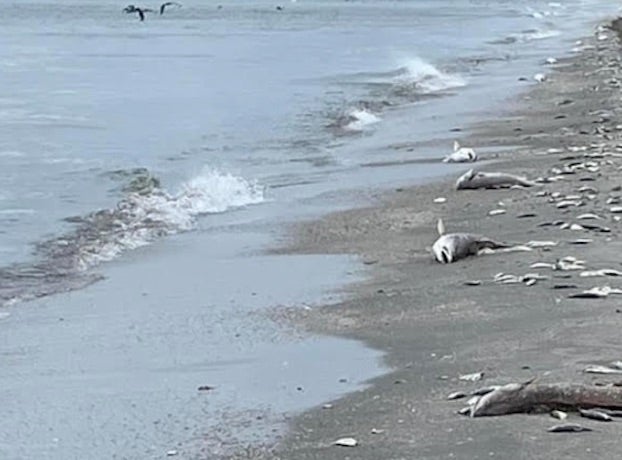LWF proposes major changes in deer zones
Published 8:32 am Monday, February 11, 2013
BATON ROUGE (AP) — State Wildlife Division chief Kenny Ribbeck said earlier this month Department of Wildlife and Fisheries deer biologists were looking at changes in Louisiana’s deer-season structure.
Thursday they delivered — and how.
Ribbeck’s staff cited development of new tracts for homes in the Florida Parishes; increasing land loss; impacts of storms and flooding; and an overall degrading of deer habitat in the southeastern and southwestern parishes. The staff, most notably Deer Study group leader Scott Durham, told the Louisiana Wildlife and Fisheries Commission that the combination of weather, agricultural, ecological and environmental changes in the coastal areas forced state upland game biologists to take a hard, yearslong look at overall health and well-being of the deer herds in the southern half of the state.
“We needed changes,” Durham said.
Durham said the straw that broke the camel’s back in this instance was Hurricane Isaac and the disastrous effect is had on deer herds along the shores of Lakes Pontchartrain and Maurepas.
A post-Isaac assessment was that as many as 90 percent of the fawns born during the weeks before the storm perished in the swamps and marshes in a seven-parish area surrounding the lakes.
He further said landowners and hunters reported declines in deer herds before Isaac, possibly as far back at 2005’s hurricanes Katrina and Rita.
The proposal offered during the meeting dramatically alters State Deer Areas 1, 3 and 6 and adds two more deer areas to the state’s deer-hunting map.
In the southeastern parishes, most of current Area 1 that lay in the Florida Parishes will be moved into State Deer Area 4. This move leaves some of East Baton Rouge, a small part of southwestern East Feliciana and the western half of West Feliciana Parish in Area 1 with the main dividing line running north-south along U.S. 61.
The major shift comes in what hunters have known for years as State Deer Area 6. The proposed move to a new area — Area 9 — affects all or parts of 17 parishes and includes the Atchafalaya Basin and the lower Mississippi River.
For the southwestern parishes, the dividing line is Interstate 49 at Interstate 10 and lands to the south and west of that point in a new State Deer Area 10. It’s carved from the lower reaches of what is State Deer Area 3 and includes all or parts of Cameron, Vermilion, Calcasieu, Jefferson Davis, Acadia, Lafayette and Iberia parishes.
Another major change is a departure from the near 10-year-old plan that allows the taking of bucks and does throughout the archery and firearms seasons.
Durham said the new areas will see the return of either-sex days, periods when hunters can take both sexes of whitetail deer, to the season structure.
He said hunters can expect 16 either-sex days in most cases if the proposals are accepted by the State Legislature in May, then the commission in June.
Public comment will be accepted by the Wildlife Division for the next 60 days.
Durham said the plan, if approved, will be implemented for the 2013-2014 season, and changes are being made in the state’s deer-tagging reporting system.
“There will be a person answering the phone, not a computer reporting system, and we believe that will help increase hunters reporting their deer and help us better understand what’s going on with our deer,” Durham said.
The major news for freshwater anglers came from Inland Fisheries administrator Mike Wood and his staff’s proposal to change black bass regulations for the Atchafalaya Spillway, the Lake Verret Basin and Lake Fausse Pointe.
The move will eliminate the minimum size limit on “keeper” black bass from the 20-year-old 14 inches minimum-size mandate and reduce the daily creel limit from 10 to 7 bass. Current daily limits are 10.
The new plan will have a two-year run to allow fisheries biologists to determine if the daily creel should stay the same, be lowered or be increased.
Such rule changes carry a 120-day comment period and then official promulgation in the State Register.
About the earliest anglers would be able to fish under these new regulations is on or about June 20.
A couple of notes from the state’s January duck survey from State Waterfowl Study leader Larry Reynolds show hunters something they likely didn’t expect to find, that the state had more ducks in January than in December, about 30 percent more.
The survey showed January’s count was seven percent higher than the most recent 5-year average (2.44 million), but is 14 percent below the long-term average (3.05 million).
(Special to the American Press)





